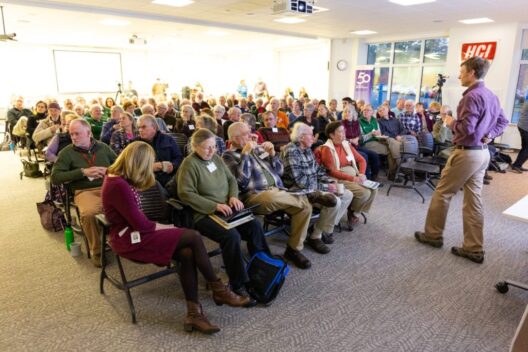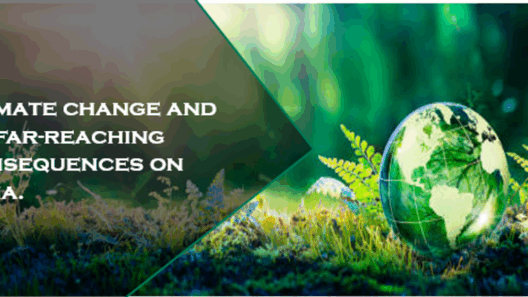As the world grapples with the exigencies of climate change, a critical topic frequently overlooked is the environmental impact of livestock agriculture. The metaphorical “cow in the room” embodies the hesitancy surrounding this issue. Unbeknownst to many, raising livestock, particularly cattle, is a substantial contributor to the greenhouse gas emissions that expedite global warming. This discourse seeks to elucidate the intricate relationship between livestock farming and climate change, explore the resultant ecological ramifications, and propose a paradigm shift necessary for sustainability.
The livestock sector is a predominant source of methane and nitrous oxide, potent greenhouse gases with a significantly greater warming potential than carbon dioxide. According to research, methane has a warming effect that is approximately 28 times more powerful than that of carbon dioxide over a 100-year period. Livestock farming, especially ruminants like cows and sheep, produces methane during digestion through a process known as enteric fermentation. This natural digestive process is exacerbated by the high feed-to-meat conversion inefficiency characteristic of such livestock.
Moreover, the statistics are staggering. The Food and Agriculture Organization (FAO) reports that livestock farming accounts for approximately 14.5% of global greenhouse gas emissions. This figure, while significant on its own, is often understated when the broader implications of land use changes, deforestation for pasture, and feed production are considered. The relentless expansion of pastures necessitates the clearing of forests, wetlands, and grasslands—ecosystems that serve as critical carbon sinks. Deforestation not only releases carbon dioxide but also diminishes the Earth’s capacity to sequester carbon in the future.
The ramifications of livestock farming extend beyond greenhouse gas emissions. The overgrazing of land can result in soil degradation, leading to erosion and a decline in soil fertility. This degradation perpetuates a vicious cycle where farmers may feel compelled to utilize more fertilizers and chemicals, further harming soil health and increasing emissions. Furthermore, the excessive reliance on monoculture crop systems, which are often employed to feed livestock, depletes biodiversity and disrupts ecosystems.
In addition to ecological consequences, the sociopolitical dimensions of livestock farming warrant examination. The industrial livestock sector encapsulates a myriad of ethical dilemmas concerning animal welfare. The conditions in which many livestock are raised are fraught with concerns over humane treatment and animal rights. Concurrently, the sector perpetuates socio-economic inequalities. In many developing countries, land that could sustain local communities or diverse ecosystems is often repurposed for expansive livestock farming operations dominated by multinational corporations. This trend exacerbates food insecurity and undermines local food sovereignty.
Addressing the intertwined challenges of livestock agriculture and climate change requires a multifaceted approach. Transitioning to more sustainable forms of agriculture is paramount. Innovations such as agroecology, which incorporates ecological principles into agricultural practices, can enhance resilience while reducing dependency on synthetic fertilizers and pesticides. Furthermore, integrating livestock into cropping systems can yield benefits by improving soil health and enhancing biodiversity. Such symbiotic farming practices can potentially mitigate the adverse effects of concentrated animal feeding operations (CAFOs) while ensuring food security.
Additionally, consumers play a pivotal role in influencing the livestock sector. A paradigm shift towards plant-based diets, or reducing meat consumption, can drastically mitigate demand pressures on livestock farming. The rise of vegetarianism and veganism, propelled by a growing awareness of the environmental impacts of animal agriculture, underscores a tangible shift in consumer behavior. Even minor reductions in meat consumption can result in significant decreases in methane emissions, land use, and water consumption. Public campaigns advocating for Meatless Mondays or similar initiatives are gaining traction, promoting a cultural transition toward plant-oriented diets.
Policy interventions are equally vital in addressing livestock-induced climate change. Governments must institutionalize regulations that promote sustainable farming practices, incentivize tree planting to sequester carbon, and support regenerative agriculture endeavors. Thoughtful policymaking can stimulate innovations in sustainable livestock production, through research funding and infrastructure development. For instance, directing resources towards developing feed additives that reduce methane emissions during digestion could yield substantial environmental benefits.
Moreover, educating consumers about the environmental impact of their dietary choices is essential. Increasing overall awareness can catalyze a grassroots movement advocating for sustainable practices. This enlightenment must extend beyond mere awareness; it must foster action—encouraging individuals to reconsider their consumption habits and advocate for systemic change. The “cow in the room” can no longer remain an overlooked topic in the discourse on climate change.
In conclusion, addressing climate change necessitates recognizing and confronting the substantial impact of livestock farming on the environment. The consequences of this sector are far-reaching and interwoven with ecological, ethical, and socio-economic threads. Embracing sustainable agricultural practices, transitioning towards plant-based diets, and implementing comprehensive policy measures can collectively foster a more resilient and equitable food system. The urgency of climate action compels society to face the cow in the room, transforming awareness into action and ensuring a livable planet for future generations.








